It's called VPA 208Gx and it's a water-based floor varnish by ICA. The lacquer is available in 3 different gloss levels: VPA208G10 - matt parquet lacquer (gloss 10), VPA 208G30 - semi-matt parquet varnish (gloss 30) and VPA208G60 - semi-gloss floor varnish (gloss 60). The varnish is catalyzed in 10% with the catalyst CA508. The package contains a 10 kg can of lacquer in the desired gloss and a 1 kg can of catalyst.
Features waterborne parquet varnish VPA208
VPA208 floor varnish is transparent, two-component and the catalyst CA508 used for hardening has an anti-yellowing effect. It is highly scratch resistant, durable and chemically resistant. It even withstands car tires and does not leave streaks. It is recommended for wooden floors with heavy traffic because it resists very well to everything that this means: increased abrasion, scratches, bumps, knocks and other mechanical actions.
The appearance in the can is opalescent, characteristic of water-based products. When applied, however, it becomes much more transparent, and after drying, all traces of opalescence disappear. The gloss grade variants cover practically most requirements. In the matt version, gloss grade 10, the varnish film formed has no sheen at all and the wooden floor has a very natural look. Semi-matt varnish has a slight, but quite discreet sheen. In the semi-gloss version the lacquer has a higher gloss, but not a mirror gloss. Mirror gloss is not recommended for parquet floors.
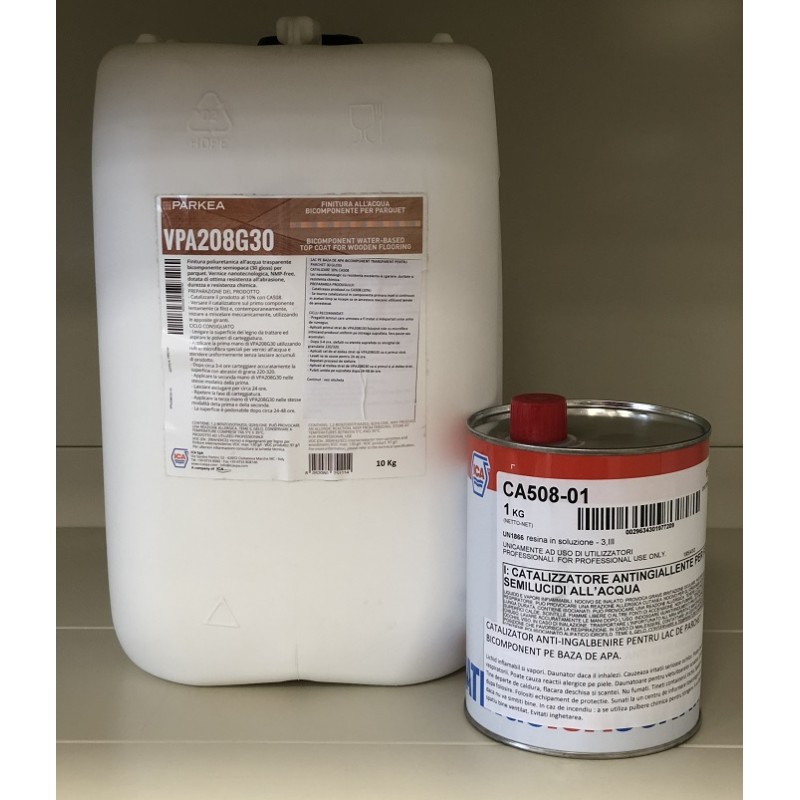
Application
VPA208G floor varnish is best applied with a trowel. It can also be applied with a brush, but with the trowel the quantity applied is better controlled and the coat is more evenly spread. Before application catalyze 10% with CA508 hardener. It is preferable to apply the mixture in this way without adding water. Water raises the wood grain and makes sanding between coats more difficult. However, if the mixture needs to be diluted, do not add more than 5% water.
Before you start finishing, the wooden floor must be grouted, sanded and thoroughly cleaned. For white grinding 120-150 grit sandpaper is used. For easier work you can use a electric hand sander.
Prepare the lacquer by adding 10% catalyst and, if necessary, water. The catalyst is very sensitive to contact with water (it hardens instantly). Therefore it is first mixed thoroughly with the varnish and then water is added.
Apply the first coat of varnish with the mocrofiber roller. Spread the varnish evenly all over the floor. Consumption should be between 60 and 90 g/m².
After 3-4 hours do sanding between layers to achieve a smooth surface and a pleasant tuft. Drying depends on the temperature and ventilation in the room. Depending on these factors, the drying time may decrease or increase. Recommended drying times are for a temperature of 23ºC and an air humidity of 60%.
Sand between coats with 280 or 320 grit sandpaper. For semi-glossy varnish, use min.320 grit so that the fine sanding grains are not visible (you can also use 400 grit paper).
Apply the second coat after sanding and sanding. For a good surface, 3 coats are recommended. The third coat is applied 24 hours after the second coat if sanding between coats or without sanding at 2-8 hour intervals. For a smooth and rough-free surface, sand after each coat.
After applying the three coats of varnish, allow a minimum of 24 hours before walking on the varnished surface. The reaction is complete after 5-7 days. If you respect this period, you will not be surprised to discover any impressions on the surface from heavy objects.
Recommendations for a correct and surprise-free use of waterborne floor varnish
- Store at temperatures between 10°C and 35°C.
- For good spreading do not apply at temperatures below 10-15°C.
- Mix the product thoroughly in the original packaging before use. After a longer period it is possible that the sweeping agent may settle. To restore its gloss, simply mix it before combining it with the catalyst.
- Mixing with the catalyst is done by pouring it in slowly under continuous stirring.
- The varnish mixed with the catalyst must be used within 4 hours. After this time it starts to lose its properties. If it begins to thicken, do not dilute it in the belief that it will return to its original properties. To avoid loss, prepare smaller quantities that you are sure to consume within 4 hours.
- After you have finished applying, wash the tools with clean water.
- Do not store products below 5ºC. If they freeze they cannot be used after thawing.
Advantages of using water-based varnish
Water-based varnish allows you to work without the odor and flammability problems of solvent-based products. The properties of waterborne varnish are comparable to those of conventional products and can be used without reservation to protect heavily trafficked surfaces.
Its use is simple and does not require large quantities of catalyst. The percentage of 10% is sufficient to achieve hard, scratch and impact resistant surfaces with considerable chemical resistance.
The varnish can also be used to coat other surfaces that need extra strength, such as tabletops and kitchen worktops.
Don't miss out on today's offer, especially since you can choose your favorite gloss: matte, semi-matte or semi-gloss.
Links to products in store:
VPA208G10 - matt parquet lacquer (gloss 10)
VPA 208G30 - semi-matt parquet varnish (gloss 30)
VPA208G60 - semi-gloss parquet varnish (gloss 60)
Good luck!

























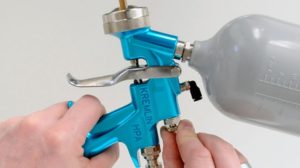
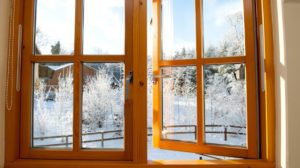
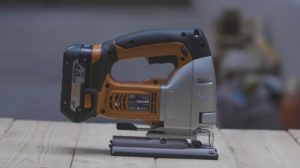
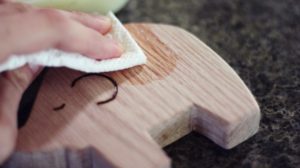

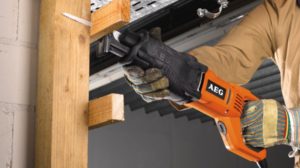





Add comment